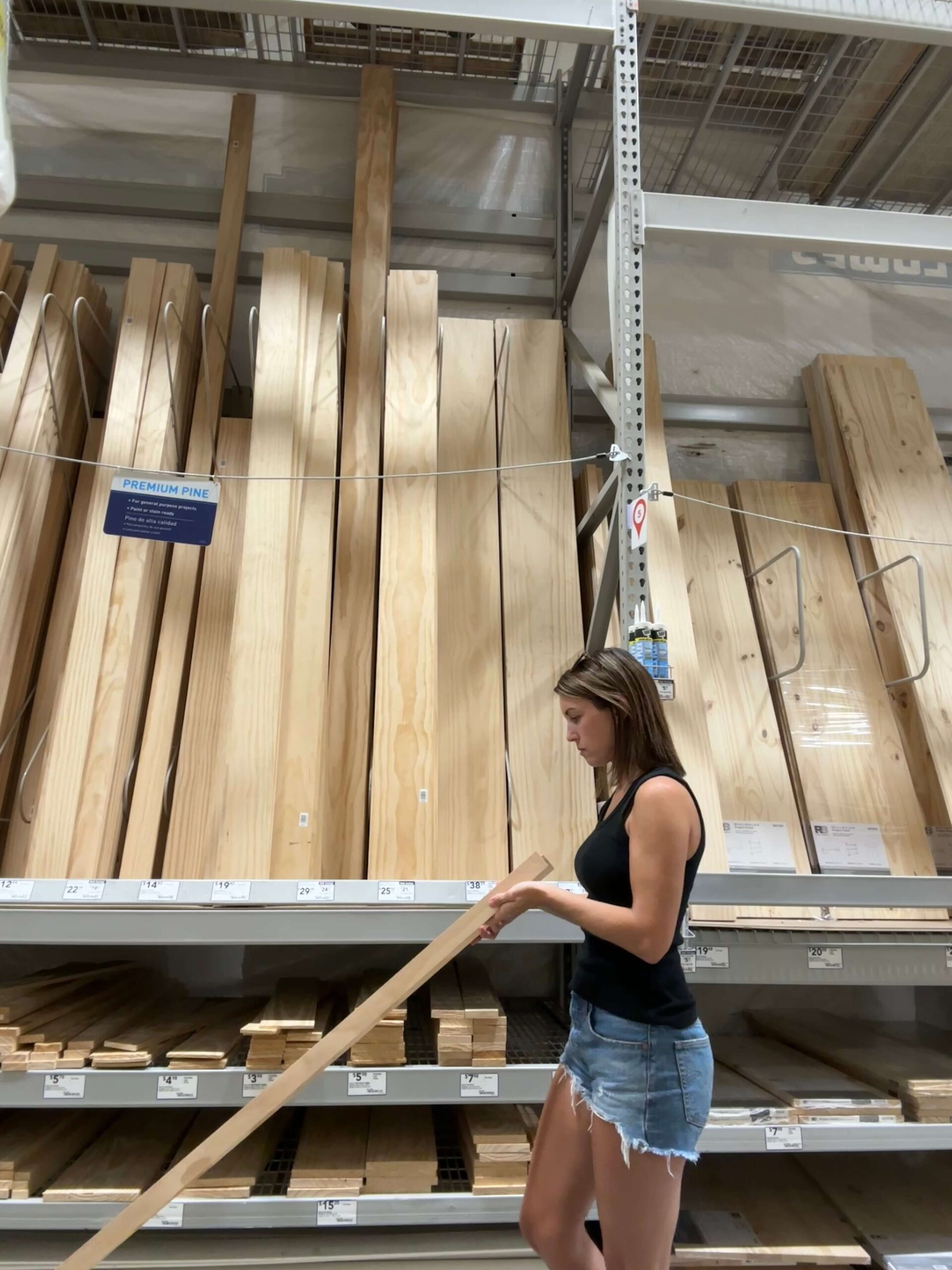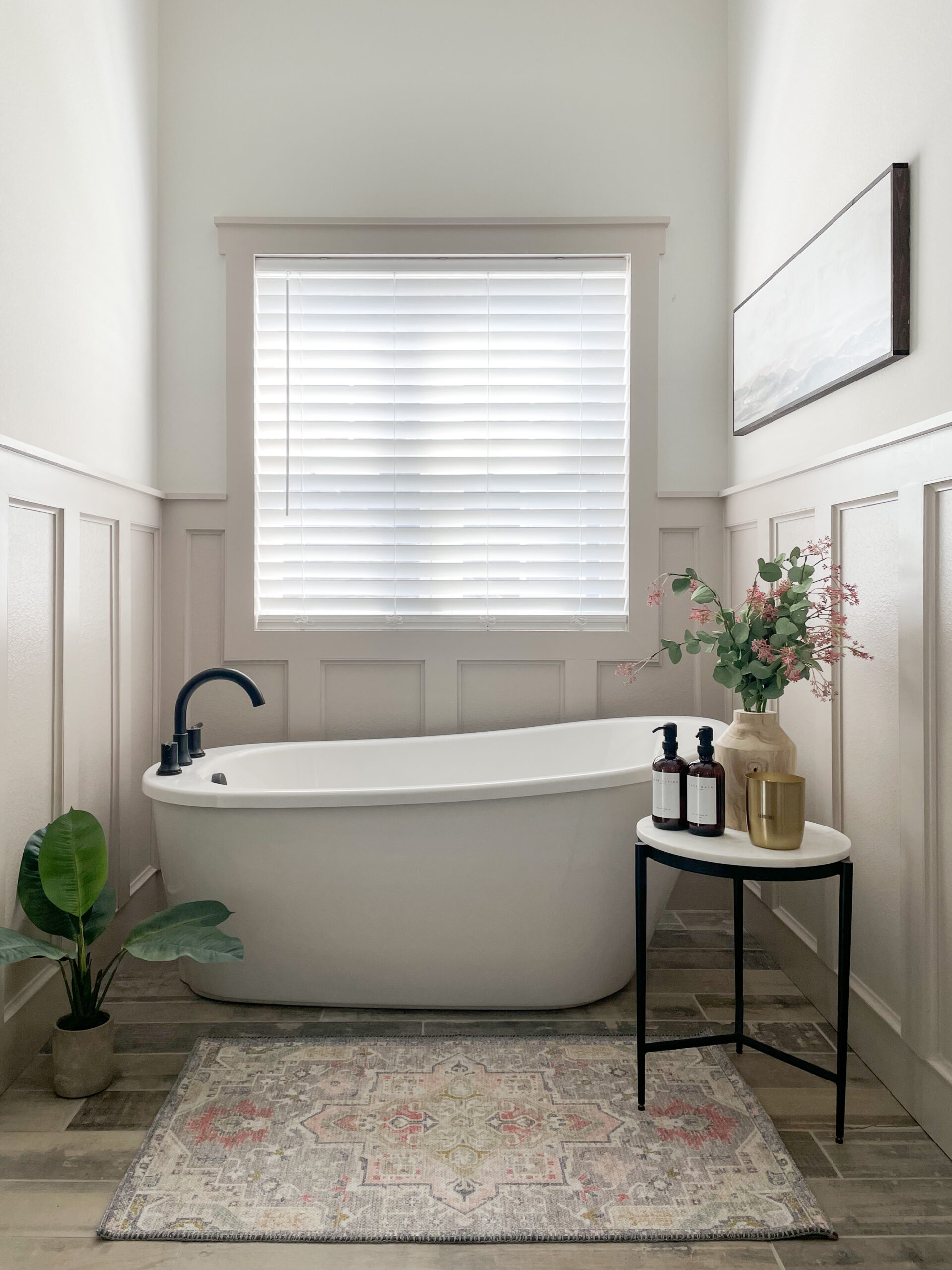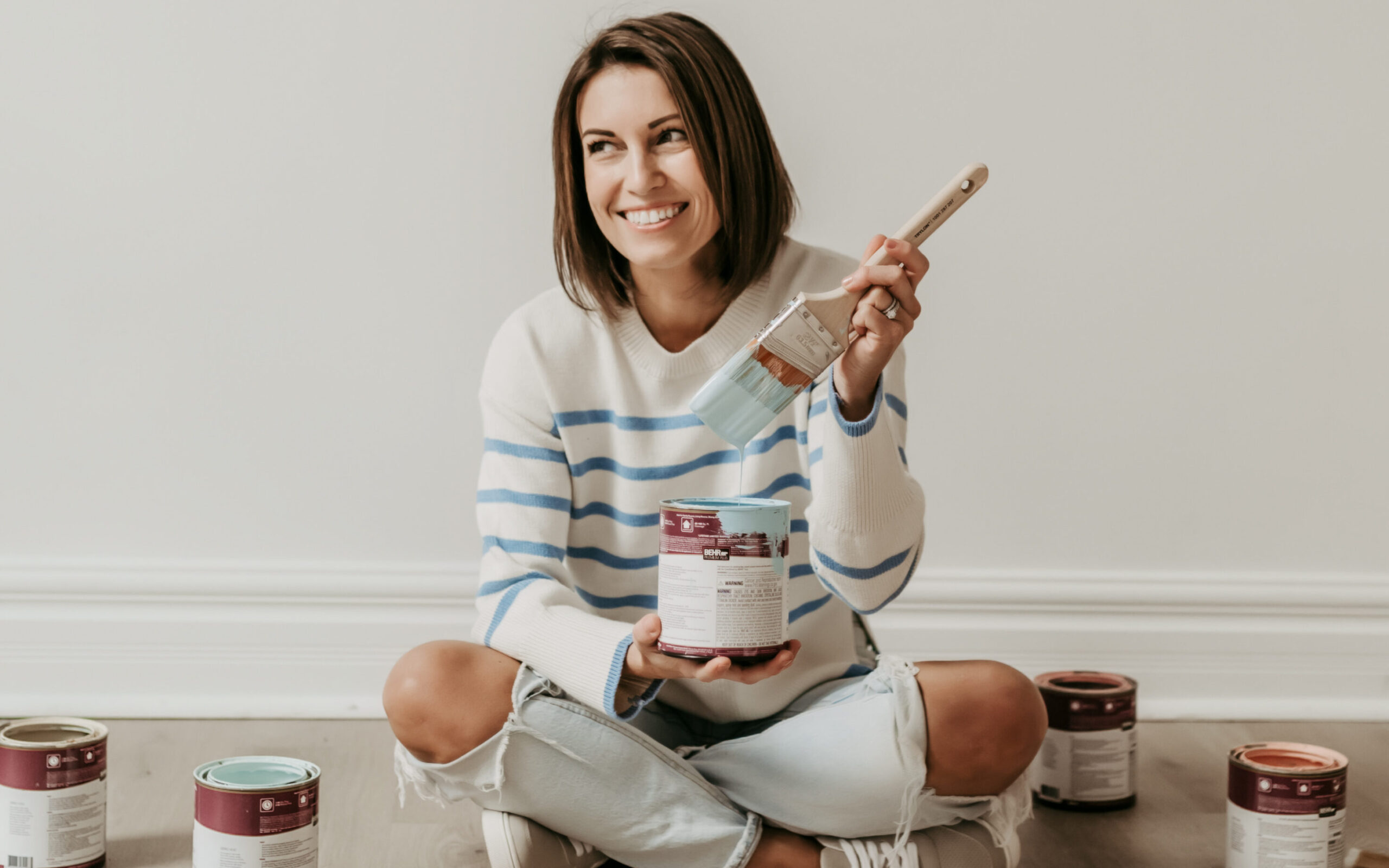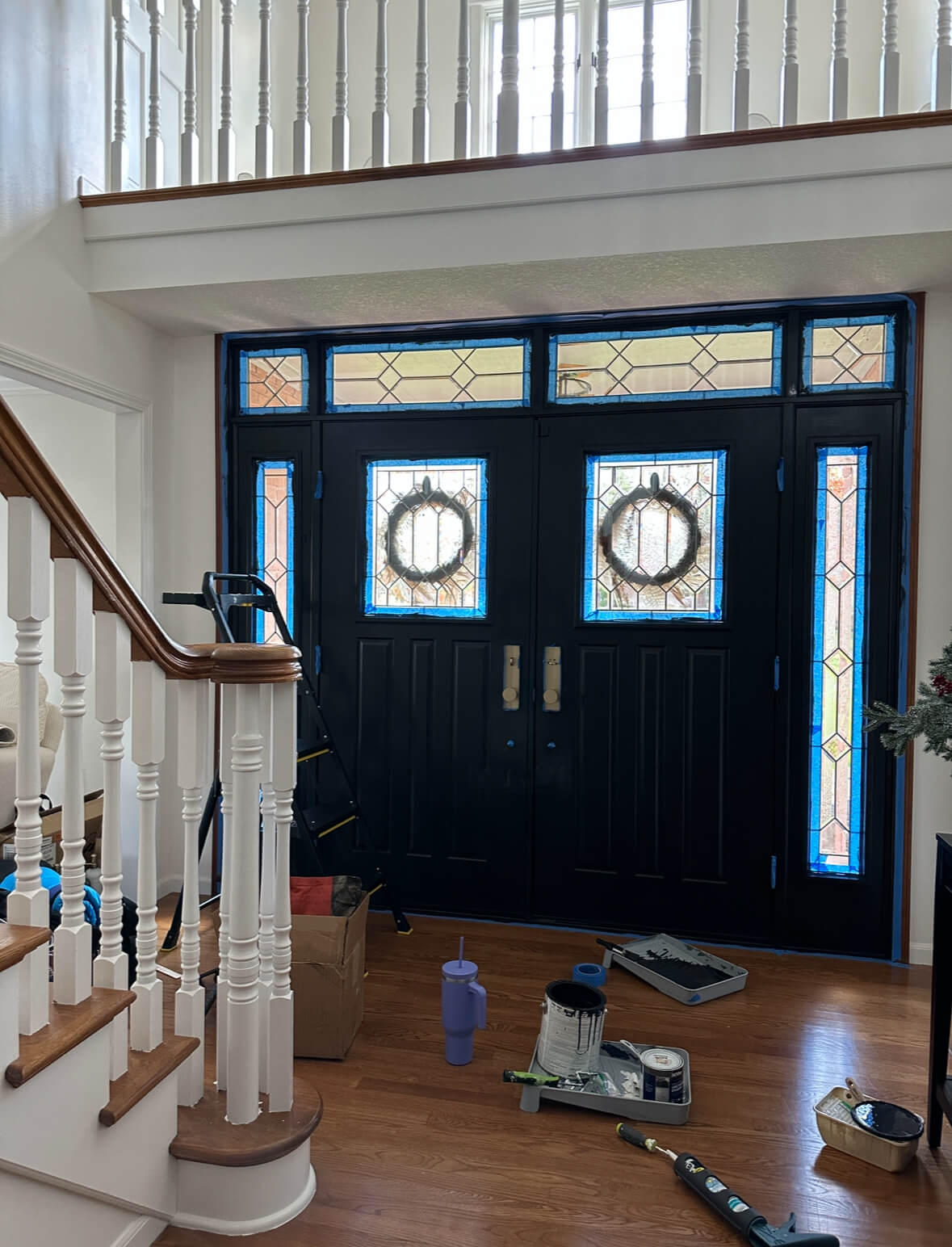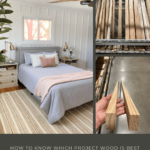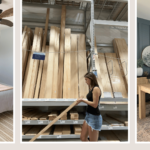Choosing the right type of project wood is key when it comes to making your DIY projects durable, functional, and beautiful. Understanding what types of wood are available and what they can be used for is also key to staying within a budget!
However, the wood aisles in Lowe’s and Home Depot can be intimidating and overwhelming to a beginner DIYer, so I’m here to give you all the info you need so you can walk in confident and prepared.
Where to Purchase Your Lumber
For most DIY projects, you’ll source your lumber from a big box hardware store like Lowe’s or Home Depot. With several options to choose from, it can feel overwhelming for a beginner DIYer. But don’t panic, once you know the basics, you’ll be able to pick out the right lumber for your project every time!
Some of the most common wood choices for DIY projects are select pine, MDF, and plywood. Depending on your project, any of these might work! So let’s break down each type of wood and what type of projects they’d work best in.
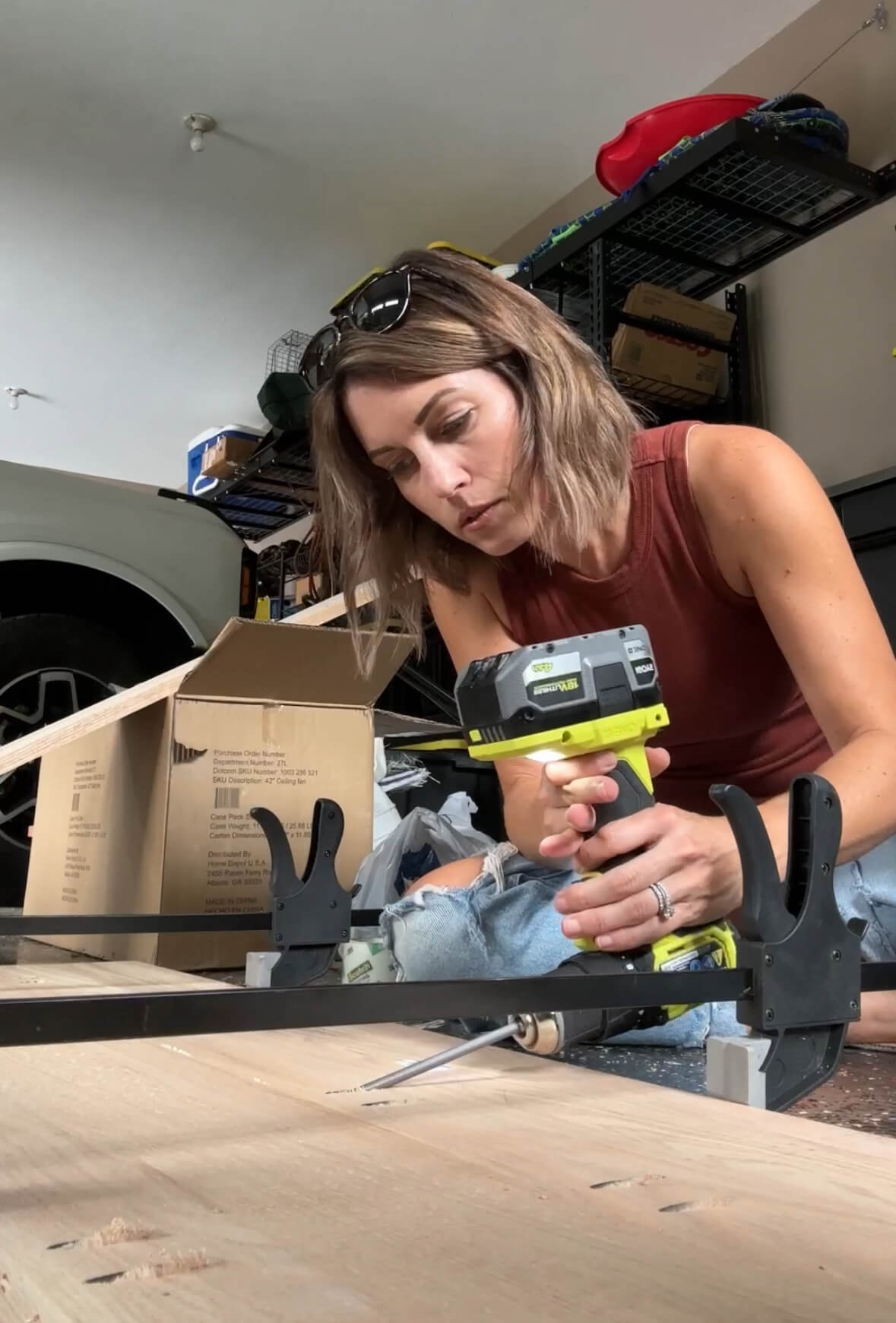
The 4 Basic Types of DIY Project Wood
There are four popular types of lumber that are the most common for DIYers: hardwood, softwood, plywood, and MDF. To discuss the pros and cons of each, let’s break down the differences between hardwood vs softwood and plywood vs. MDF.
Hardwoods vs. Softwoods
Hardwoods such as oak, walnut, and maple, are usually more expensive and are most often used for flooring, cabinetry, and high-end furniture making. They’re beautiful, but frequently not the first choice for most DIY projects. Seeing that they’re “hardwoods” they’re difficult to cut and not very forgiving (think $$$) when you make a mistake. I rarely use these woods for my DIY projects.

Softwoods such as pine, fir, and cedar are less expensive and are what most DIY projects are made from. When someone says they are grabbing a 2×4 for a project, they’re usually referring to softwood that has been milled to that approximate size.
My favorite softwood for DIY projects is select pine. I have used it in many projects, including my DIY Porch Swing and Woven Bench. I also used it in all of my closet builds!
Softwood is considered a budget-friendly lumber option, and plywood and MDF can also be very reasonably priced as well. Select pine can also be a great choice when adding board and batten, however, more often than not, I use MDF for these projects.
Plywood vs. MDF
Plywood is a popular option for DIY projects because it can be very affordable depending on what type you choose. It’s an engineered wood made by gluing layers of wood together. There are many different types of plywood, and plywood costs anywhere from $30 to hundreds of dollars (especially if it’s a higher-quality hardwood plywood).
I prefer to use sanded plywood most often for my DIY projects. Many of my projects (cabinets, shelving, closets, etc.) used 1/2″ thick or 3/4″ thick plywood. You can check out some of my projects that used sanded plywood on my Instagram page, including these closet drawers and my fireplace mantel.
MDF is another great project wood for DIY projects. It’s also usually at a manageable price point, especially when it comes to trim and accent walls. MDF is engineered wood that is made of wood fibers that have been pressed together under high heat and pressure. I love to use primed MDF on my accent walls. I even used it as an affordable way to upgrade my cabinets.
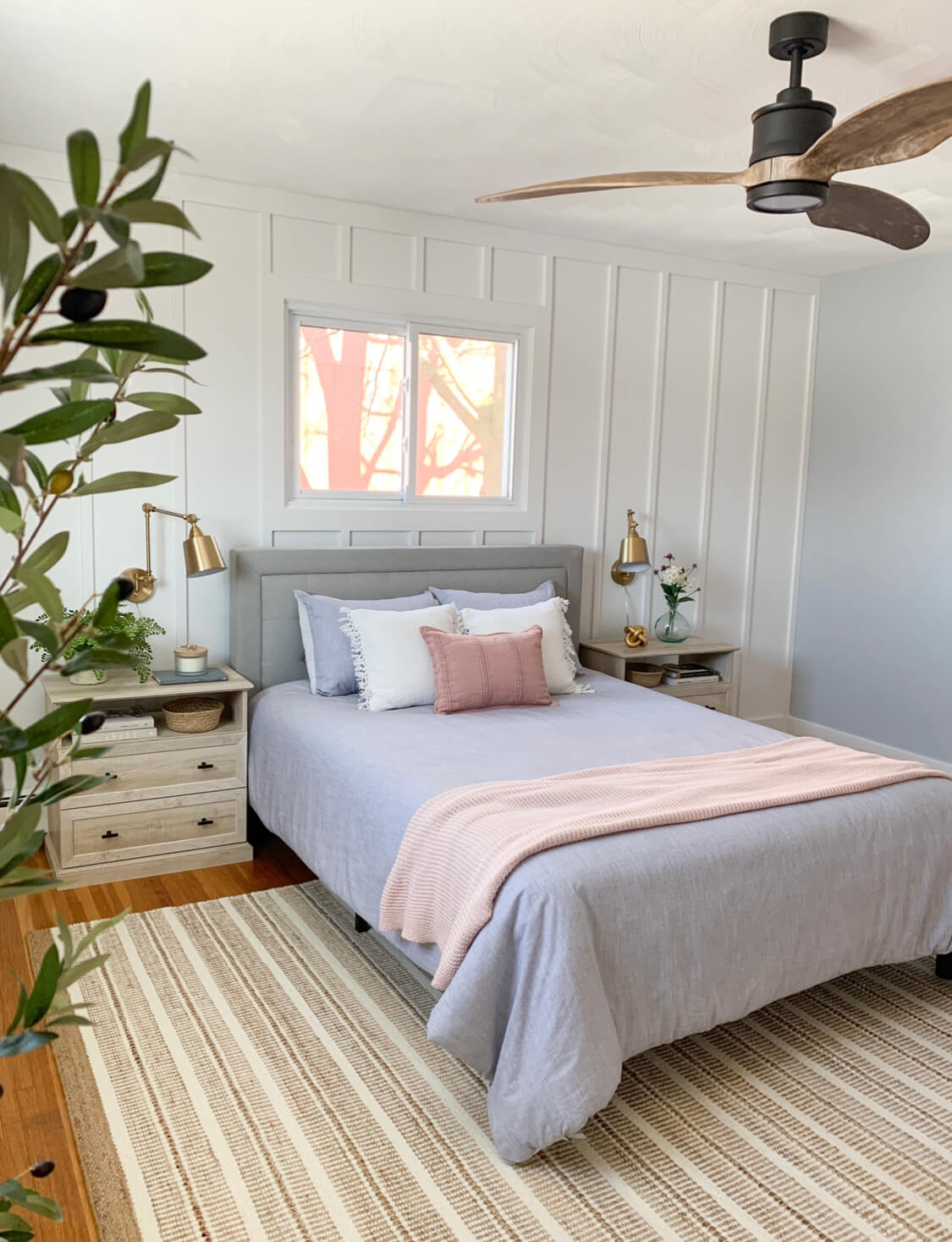
Depending on your project, make sure you choose the right wood for the best results. Besides the type of wood, you also want to ensure you get a quality product at your big box store.
How to Select Wood for Your Project
Now that you know the different types of wood available for your various projects, let’s discuss more about selecting wood from your local retailers.
When you head to your local Home Depot or Lowe’s, don’t be afraid to be picky when selecting the boards for your project. If the first piece you pull out looks wonky, PUT IT BACK! When you pick out your wood, look closely at each piece so you don’t end up with a bunch of warped and uneven boards when you get home.

Unfortunately, wood at these stores is often picked over and rifled through. It’s okay to examine each board and take the time to find the best ones to add to your cart!
To avoid getting home with a wonky board, here’s the process I recommend when selecting wood:
- Pull out the pieces of wood that you need
- Hold each board lengthwise in front of you
- Look down the board to make sure it is straight
- Turn the board onto each side to make sure all sides are straight and it isn’t warped
- If a board is even a little bit crooked, put it back and select a new one
As an additional tip, it’s easier to find straight pieces in the 6ft size instead of the 8ft.
Additionally, make sure to check your lumber for splits in the wood! Do a close inspection on all your lumber, so you get quality pieces every time. The higher quality wood will result in a higher quality result.
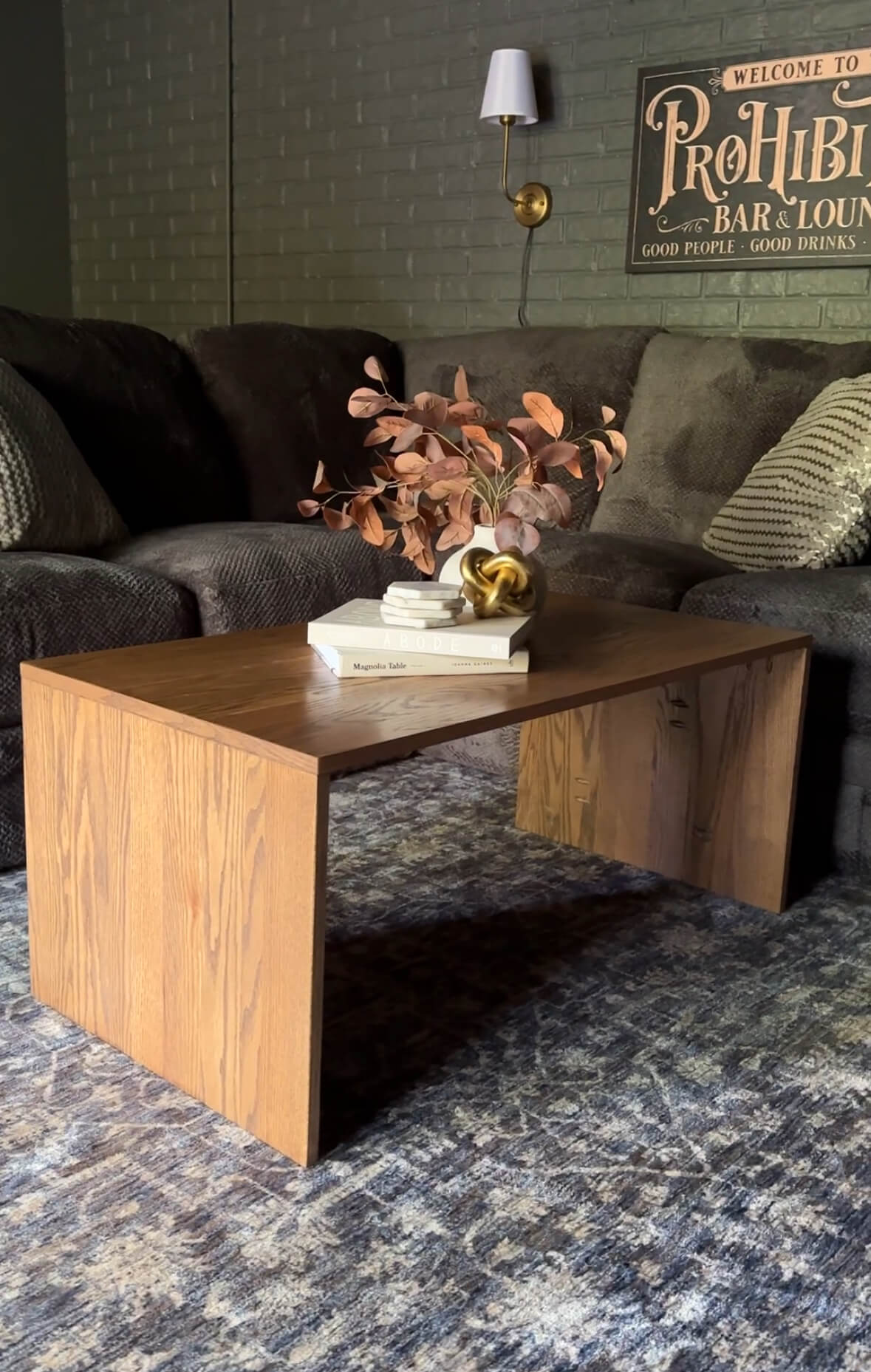
Take this cute table (pictured above), for example. After choosing the best wood for this project and being selective when purchasing my lumber, all I needed was my drill and a Kreg Jig to make a jaw-dropping final piece!

How to Choose the Right Project Wood
For almost all DIY projects, you will likely use more than one type of lumber. That’s why it’s important to assess the purpose behind each project.
When I built my custom closet systems, I used a combination of sanded plywood and select pine boards. You’ll most likely use MDF, Plywood, or a milled softwood for most of your DIY projects.
On rare occasions, you might use hardwood for a project if you need a very durable wood and can afford the elevated price.
Choosing the Best Project Wood

After you’ve picked a project and the wood, all you’ll need is a good set of tools to finish your project! For almost all my lumber projects, I reach for my Brad Nailer, Circular Saw, and my basic set of hand tools.
With all the right tools and wood, you’re well on your way to doing your very first DIY project. If you’re ready to start some simple renovations around your house, check out some of my favorite DIY beginner-friendly projects!
For more information on which wood and tools you need for your DIY project, follow me on Instagram. That’s where I share all my favorite DIY projects, tips, tricks, and more!
XO, Melissa
